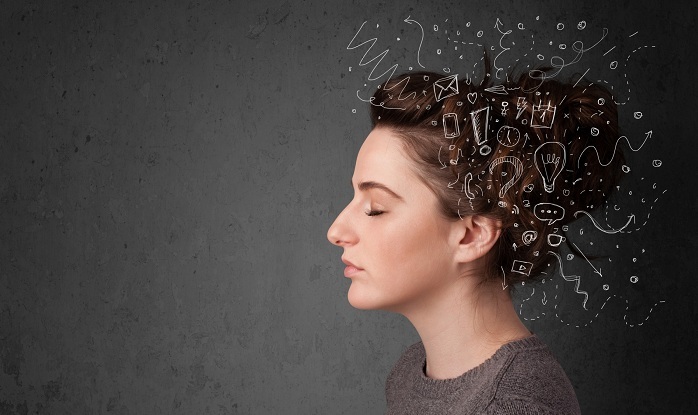Do not believe your eyes, or insidious tricks of our consciousness

Our brain is capable of incredible things! And creating very convincing non-existent images is one such ability. Due to what is this happening, and how to live, benefiting from the knowledge of this particular psyche ?
Hallucinations are what people often associate with drugs or mental disorders. The truth is that all of us periodically are to some degree or another under the influence of hallucinations. Do not believe?
')
Then let's remember your dreams. When you wake up, you realize that what surrounded you in a dream is far from reality. It was such a set of images, sounds, feelings, by chance (or not by chance ?!) selected from a warehouse of files stored in your brain.
But didn’t it seem to you that everything that is happening to you is real action in real time? Then what is the difference between hallucination and reality? This question has been tormenting philosophers and scientists for many years. Unfortunately, we have not received a convincing answer yet.
And our brain gives us the image of a unicorn talking to us in a dream as convincingly as the image of the boss we actually met this morning. What separates these two visions is only your decision about what to consider as a reality, and what is considered a fiction.
How it happens: scientific justification
In his remarkable book “The User Illusion”, Thor Northrendars declares: 90% of what we see, hear, feel is generated inside us and has nothing to do with objective reality. A fraction of a second before consciousness begins to evaluate reality, the brain has already formulated its attitude to this. It turns out that, having turned on, our consciousness no longer assesses an objective reality, but a formed image, kindly provided by the brain.
In all likelihood, you have heard of the so-called “blind spots” of our vision. In each eye there are such points. In our eyes there are photoreceptors and the retina, which, in symbiosis, provide us with the ability to see. It functions as a sensitive film - information is recorded, transmitted through the rays of light from the outside world. However, there is a point of attachment of the optic nerve to the retina - this is the very place that forms a gap in the whole canal of visual perception. So, the brain receives zero information from this point. Therefore, we have to see the picture of “holes” surrounding us ?!
But for some reason this does not happen. So, our brain manages to insert the missing elements of the puzzle?
Back in 1781, Kant insisted that for man there are two worlds: “noumenal” (or objective, real) and “phenomenal”, which is our version of the real world, but passed through personal perception.
We evaluate and interpret what is happening, based on our personal experience, our knowledge , habitual phenomena. There is a pronounced tendency to experience what we hope to experience and experience. If we are sure that some actions may cause ridicule of colleagues, and not admiration, then we will see scornful smirks of employees everywhere, even if in fact there is no trace.
Therefore, we recognize that hallucinations are a phenomenon that we regularly encounter. It can even be called a special skill developed by the brain in the process of growing up to assess the surrounding reality and facilitate existence in this world.
Children suffering from a lack of attention, love, a sense of security or care, create for themselves fictional images of non-existent defenders who have all the qualities that can compensate for the missing feelings. Sometimes, when children's psychological trauma is deep, their consequences can affect adulthood.
And now we have a dream in reality, constantly imagining ourselves to be stars of cinema or football. We begin to behave accordingly and even believe in our fantasies. But all this looks quite harmless, if, being in captivity of his fantasies, do not forget about self-improvement and self-realization in an objective life. The situation is much worse when a person stops realizing himself and, looking in a mirror, for example, as in the case of anorexia patients, sees the image of an obese person distorted by consciousness and not worthy of love and attention.
How to deal with malicious hallucinations?
First of all, stop presenting everything in the worst possible way, not being pessimistic in your expectations.
Stop fueling various fears!
It is also useful to analyze such moments:
1) What of what I see, hear, feel, other people do not feel (at least they say so)?
2) What of what I see and feel is painful for me and needs positive changes?
3) What of my ideas about myself and the world do I really implement?
This will help you to identify yourself in this world more realistically and protect you from unnecessary sensations and ideas. If you find “secret enemies” in your mind, immediately challenge them and return to a happy life!
PS We recommend another article on the topic - 10 amazing business lessons from a famous entrepreneur .
The author of the translation is Vyacheslav Davidenko, the founder of the TESTutor company.
Source: https://habr.com/ru/post/297394/
All Articles